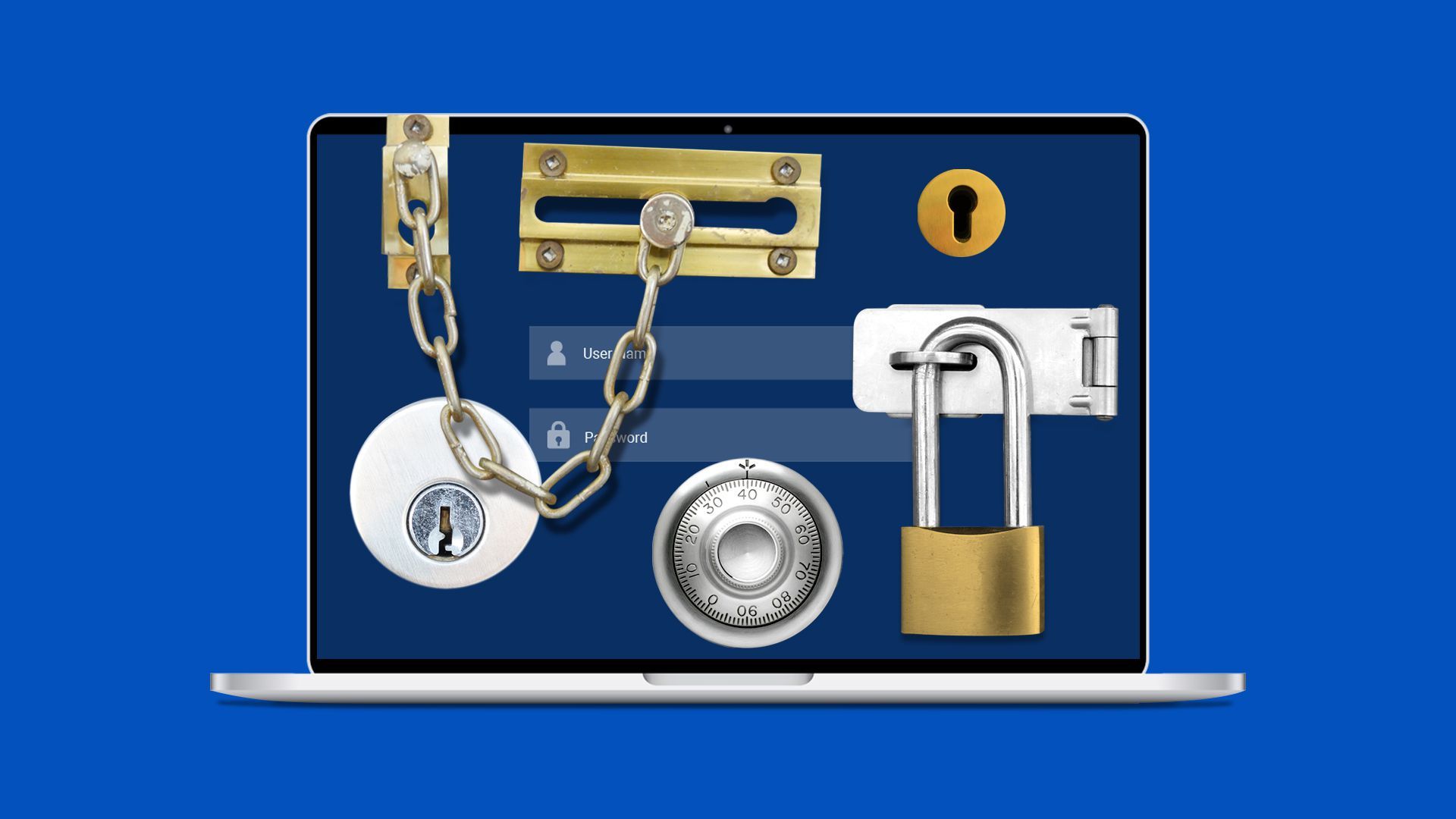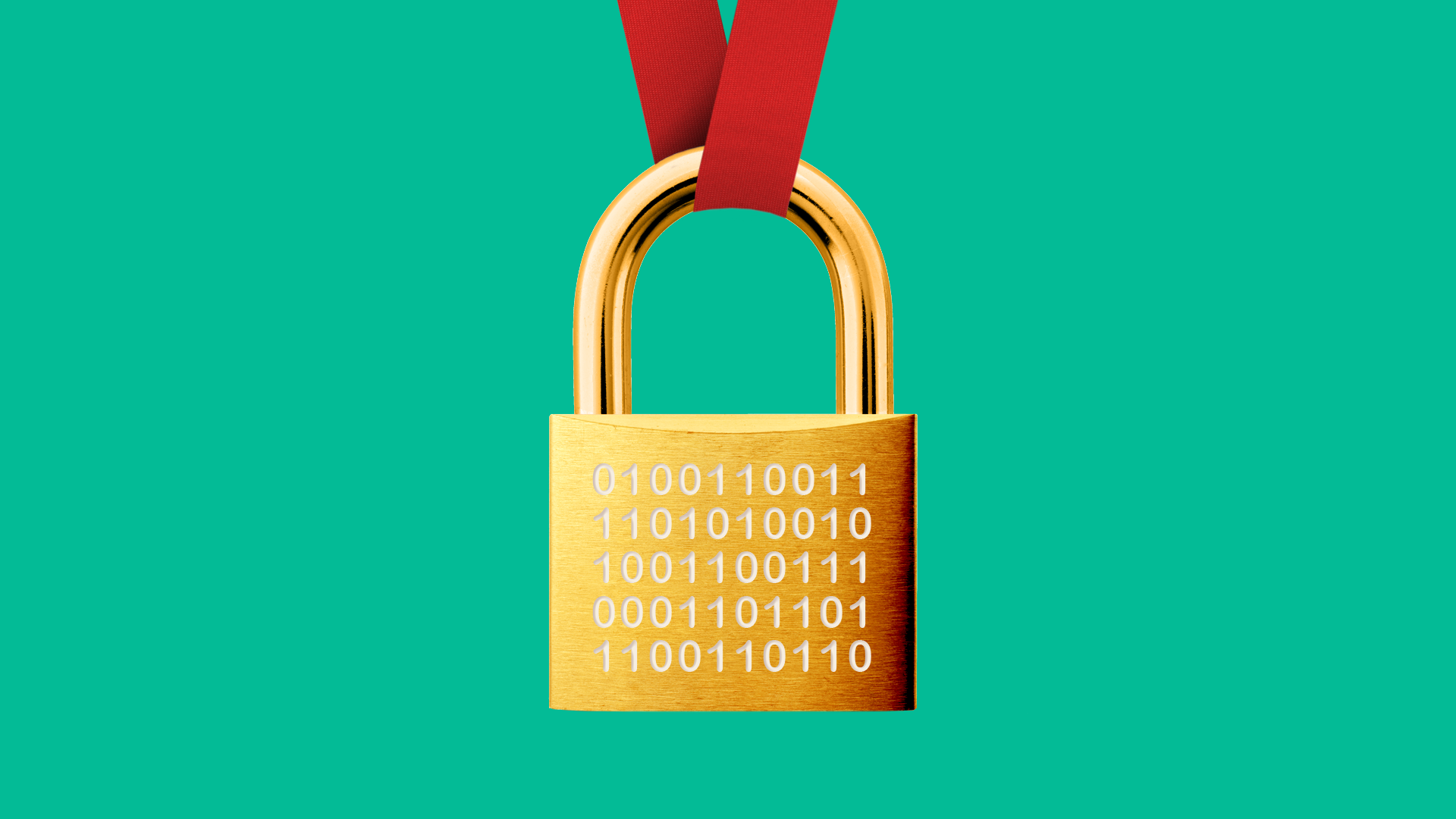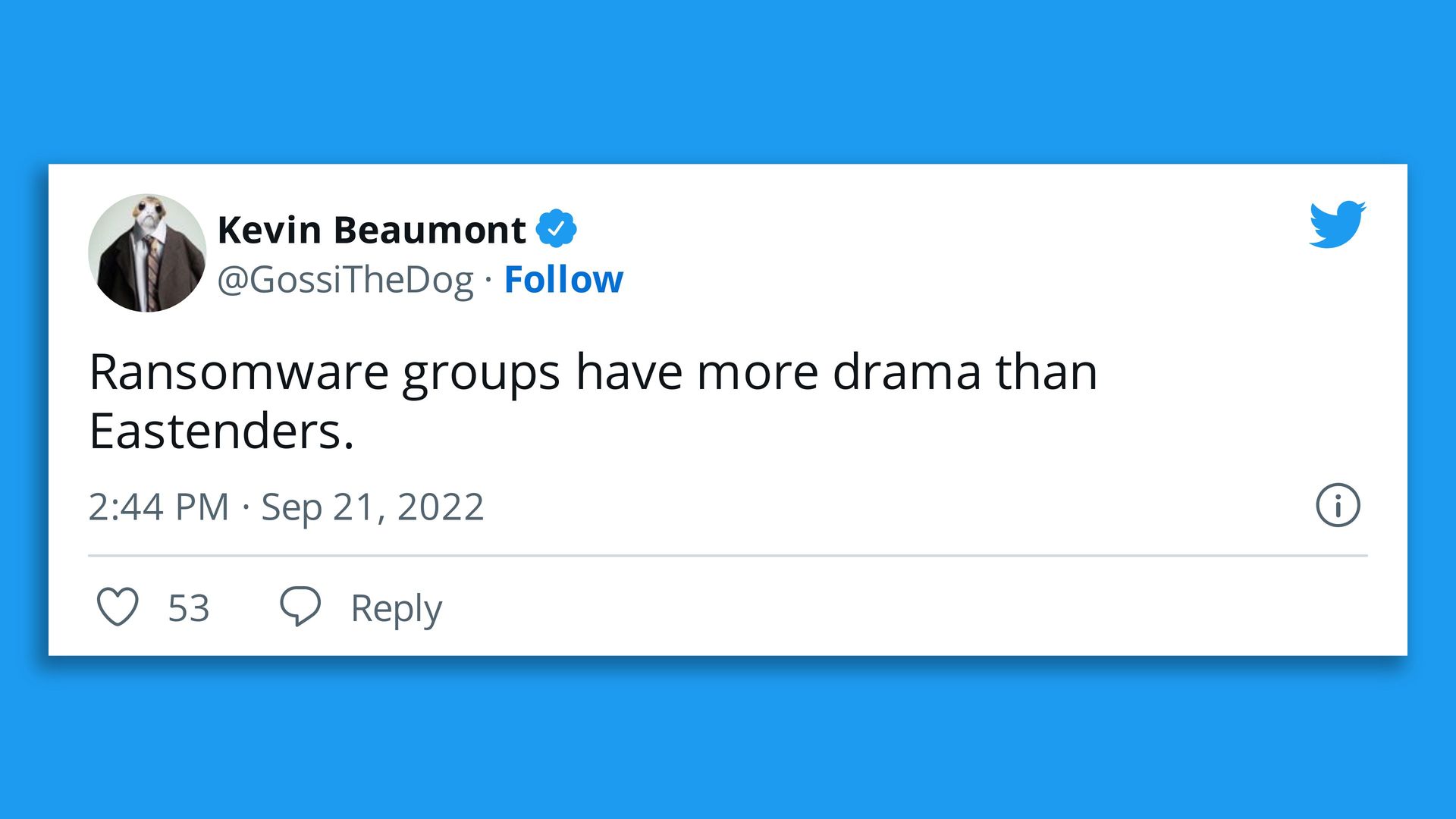|
|||
| Presented By NetApp | |||
| Axios Codebook | |||
| By Sam Sabin · Sep 23, 2022 | |||
|
😎 TGIF, everyone. Welcome back to Codebook.
Today's newsletter is 1,556 words, a 6-minute read. |
|||
| 1 big thing: Login codes need a security upgrade | |||

|
|||
|
Illustration: Natalie Peeples/Axios |
|||
|
Cybercriminals' aggressive targeting of smartphones is weakening the crux of many organizations' security procedures: text-based, multifactor authentication (MFA). The big picture: Experts have long warned that authentication protocols that rely only on sending a code to someone's phone to confirm their identity are easily manipulated. Driving the news: Uber said earlier this week that its recent security incident was the result of a so-called "MFA fatigue" attack, where hackers spam someone with authentication requests on their phone until they accept one. How it works: MFA is a process that requires people to provide a second form of identification besides a password. A popular example is having a code texted to your phone.
Why it matters: Phishing texts are becoming more and more believable as hackers start to invest more time in targeting people's phones.
Between the lines: In the absence of a good solution to stop phishing and spam texts, security experts have been pushing organizations to pursue more device-specific solutions.
Yes, but: It can be challenging for companies to implement an entirely new login protocol — especially if they work with legacy software or built internal applications themselves.
The intrigue: A middle ground still exists for companies that can't make the investment in physical device authentication.
|
|||
|
|
|||
| 2. Industry heads into cyber trenches | |||

|
|||
|
Illustration: Sarah Grillo / Axios |
|||
|
Six companies from the telecommunications, finance and energy sectors came together this week to host a cyberattack simulation to get a sense of what is — and isn't — working in their defense strategies. The big picture: This week's event marked the first time companies across these three critical infrastructure sectors have hosted a live-action simulation together.
The intrigue: Companies brought in both their defensive and offensive cyber teams, as well as their IT employees, to experience live attacks on actual networks and laptops provided just for this event.
Details: AT&T, Lumen, Mastercard, Morgan Stanley, Southern Co. and Southern California Edison participated in the event, held at AT&T's Dallas headquarters on Wednesday and Thursday.
Between the lines: On Thursday, company CISOs met with representatives from the Cybersecurity and Infrastructure Security Agency, the U.S. Secret Service and the Department of the Treasury to discuss their takeaways and how the federal government can better assist companies during these incidents.
What they're saying: "It's great to see how others react and coordinate and communicate, and you can take from that to update your own protocols and ensure that you're being as efficient as possible," Bill O'Hern, global chief security officer at AT&T, tells Axios. What's next: The companies are now looking at repeating the exercise in the future and at ways to broaden the number of participants.
|
|||
|
|
|||
| 3. Lawmakers tackle open-source software | |||

|
|||
|
Sens. Rob Portman and Gary Peters at a congressional hearing in September 2021. Photo: Greg Nash/Getty Images |
|||
|
A pair of influential senators have devised a plan to beef up the federal government’s approach to securing open-source software, or tools that developers create for free public consumption. Driving the news: Senate Homeland Security Committee leaders Gary Peters (D-Mich.) and Rob Portman (R-Ohio) introduced a bill Thursday requiring CISA to develop a risk framework laying out how the federal government relies on open-source code.
Between the lines: Since last year’s Log4j vulnerability, both the federal government and industry have been scrambling to figure out how to toughen open-source software.
Details: Peters and Portman’s Securing Open Source Software Act would require CISA and other federal offices to tackle the issue in a few ways:
The intrigue: Peters and Portman have been behind some of the most influential pieces of cybersecurity legislation in the last few years, so this bill could stand a good chance of making it through Congress.
Yes, but: Congress faces a truncated legislative schedule as the midterm elections approach, leaving little time for the lawmakers to get their bill passed before a new session begins. |
|||
|
|
|||
|
A message from NetApp |
|||
| Gain visibility and control of your data in 2 minutes | |||
|
|
|||
|
Identify and proactively correct risks, meet compliance regulations and protect against ransomware attacks across your IT ecosystem — in two minutes or less. Here’s how: NetApp scans your data and provides actionable intelligence and risk assessments. |
|||
| 4. Catch up quick | |||
|
@ D.C. 🪖 Several U.S. military branches have purchased an internet monitoring tool that can provide access to people's email data, browsing history and even sensitive internet cookies. (Vice) ✍🏻 Lawmakers are retooling their initial cybersecurity provisions in the annual defense policy bill after industry complaints. (Nextgov) 🗃 The Biden administration has assembled a small study group to determine if the National Security Agency and the U.S. Cyber Command should still share the same leader. (The Record) @ Industry 🔍 A look inside Chainalysis, the startup helping the U.S. government track cybercriminals' crypto payments. (Bloomberg) 💻 Facebook users are suing Meta for snooping on them via its in-app browser, violating Apple's 2021 iOS privacy rules. (TechCrunch) 👀 Three former TikTok department heads said they left the company after learning they’d be expected to take direction from parent company ByteDance's Beijing office. (Forbes) @ Hackers and hacks 🇷🇺 Google security researchers said they've spotted apparent coordination between pro-Russian civilian hacking groups and campaigns carried out by Russia's military intelligence agency during the Ukraine war. (Wall Street Journal) 👾 CISA and the FBI estimate that Iranian hackers were sitting in the Albanian government's networks for 14 months before deploying data-wiping malware earlier this year. (CISA) 💰 The ransomware gang behind an attack on L.A. Unified School District is now demanding the district pay a ransom to prevent a possible data leak. (Los Angeles Times) |
|||
|
|
|||
| 5. 1 fun thing | |||

|
|||
|
Screenshot: @GossiTheDog/Twitter |
|||
|
Ransomware gangs deal with their fair share of drama, just like the rest of us.
|
|||
|
|
|||
|
A message from NetApp |
|||
| The reality of ransomware attacks | |||
|
|
|||
|
In the past year, $350 million in ransoms were paid. The average downtime due to ransomware is more than 16 days. Here’s the deal: Ransomware attacks are evolving — protect every access point. Learn how NetApp helps without taking your hybrid cloud offline. |
|||
|
☀️ See y'all on Tuesday! Thanks to Peter Allen Clark for editing and Khalid Adad for copy editing this newsletter. If you like Axios Codebook, spread the word. |
|||
|
|
Axios thanks our partners for supporting our newsletters. If you’re interested in advertising, learn more here.
|
|
You received this email because you signed up for newsletters from Axios. Change your preferences or unsubscribe here. |
|
Was this email forwarded to you? Sign up now to get Axios in your inbox. |
|
Follow Axios on social media: |


